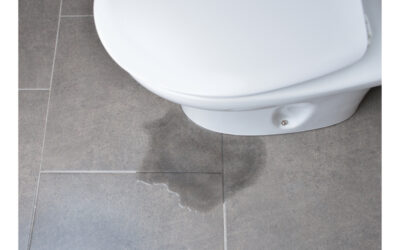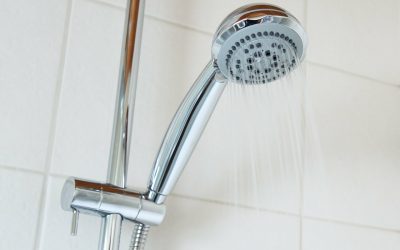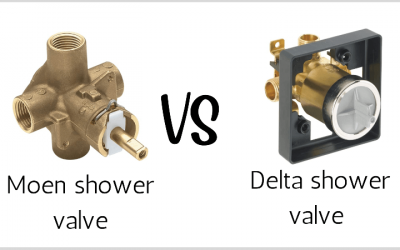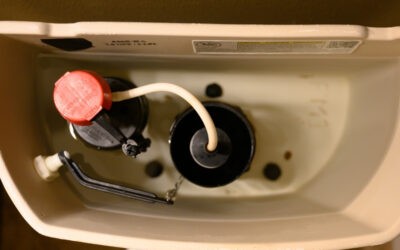Shower valves come in different designs; some are minimalists while others are modern with a touch of the latest technology. The shower valve you are looking for is based on your preferences and their compatibility in your home.
What are the different types of shower valves?
When it comes to functionality, shower valves come in two different types.
The thermostatic shower valves allow you to control the temperature of the water. It does not fluctuate when water is being used elsewhere in the house. Thermostatic valves increase the user’s showering experience by preventing scalding or icy water when the temperature varies.
On the other hand, the manual mixing valves do not control the temperature of the water. The valve only has one handle to control volume, water temperature, and water pressure. The handle is also used for turning the shower on and off.
The problem with this shower valve is that it does not maintain the water temperature. At one point, the water can be freezing and the next instant scalding hot. It is therefore not suitable for the use of children and the elderly.
What type of shower valve do I have?
Apart from functionality, there are other shower valve features that you might want to look at before settling for one. Let’s explore different types of valves and their distinctive features.
1. Mixing valves
These valves ran on the traditional hot and cold shower system. The system had two separate valves, one for the cold water and the other for the hot water. You had to switch on both valves and manually regulate them until you got the desired temperature.
However, the mixing valve system has been phased out because of the many scalding cases that were reported. If the pressure of the water dropped, the temperature of the water would increase immediately.
2. Pressure balancing valves
These are also known as anti-scalding valves. They have an inbuilt system that balances the water pressure and keeps the water temperature constant.
Thus, when you switch on the shower, you only need to adjust your desired temperature once. With pressure valves, you do not have to worry about the change in temperature due to water pressure fluctuations.
3. Thermostatic valves
The thermostatic shower valve controls the temperature aspect of the water and keeps the water pressure constant. Even if someone opens the kitchen, taps, or flushes the toilet, the volume of water in the shower remains the same.
The additional advantage of the thermostatic valve is that you do not have to wait for a few minutes after turning on the knob to start showering. You turn the knob, choose the temperature and jump into the shower.
4. Diverter valves
Diverter Shower valves come in three types; tee-valve diverter, two-valve diverter, and three-valve diverter.
The tee-valve diverter diverts the water from the main tub faucet to the showerhead. It is built inside the tub faucet and controlled by a metal pull located at the front of the faucet. When you pull at the metal, the water flow is drawn from the tub to the showerhead.
The tee-valve diverter is popular in budget hotels, mainly because of its economic feature, since the water cannot flow to the tub and shower simultaneously.
A two-valve diverter has the same functionality as the tee-valve diverter. However, it is built-in on the wall instead of on the tub faucet. The valve is controlled by a handle used to divert the water either to the showerhead or to the tub. With the two-valve diverter, you can use the single temperature control handle or a set of hot and cold knobs positioned in between.
The three-valve diverter allows you to divert water to the showerhead, the tub, or the handheld shower. It has multiple stop positions, allowing you to divert the water to more than one output. For instance, you could redirect the water to the tub and the handheld shower simultaneously.
The four-valve diverter has four different outputs; the showerhead, the rain shower head, the tub, and the handheld shower. With the four-valve diverter, two outlets can run simultaneously. Alternatively, you can decide to divert the water into one outlet for the regular shower experience.
Transfer valves were developed using the latest technology. With a transfer valve, you can direct water to various outlets at once. Thus, you can use a handheld shower without switching the main showerhead.
Transfer valves use a digital control mechanism, which means that you do not have to keep switching between knobs and adjusting the temperature. The valves do not use metal handles, and thus they are less prone to corrosion.
Related article: Shower water not hot enough?
How to identify the shower valves manufacturer.
The first thing you will need to do is identify the brand of the valve you are using. Frequently, different shower brands have unique features that differentiate them from the others.
The logo or the brand name can also be inscribed on the shower trim plate or embossed on the shower’s plate.
Conclusion
In terms of functionality, there are two types of shower valves; thermostatic valves or manual mixing valves. Thermostatic shower valves help you control temperature, whereas the manual mixing valves keep the temperature fluctuating with fluctuation of water pressure, which could lead to scalding.
So, what type of shower valve do I have? Different shower valves have various features according to user preferences. You can choose between thermostatic valves, diverter valves, and pressure-balancing valves.
You can recognize the shower valve manufacturer by checking the various unique features of the shower valve or checking for the manufacturer’s inscription in the body of the valve.






